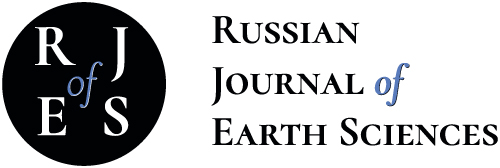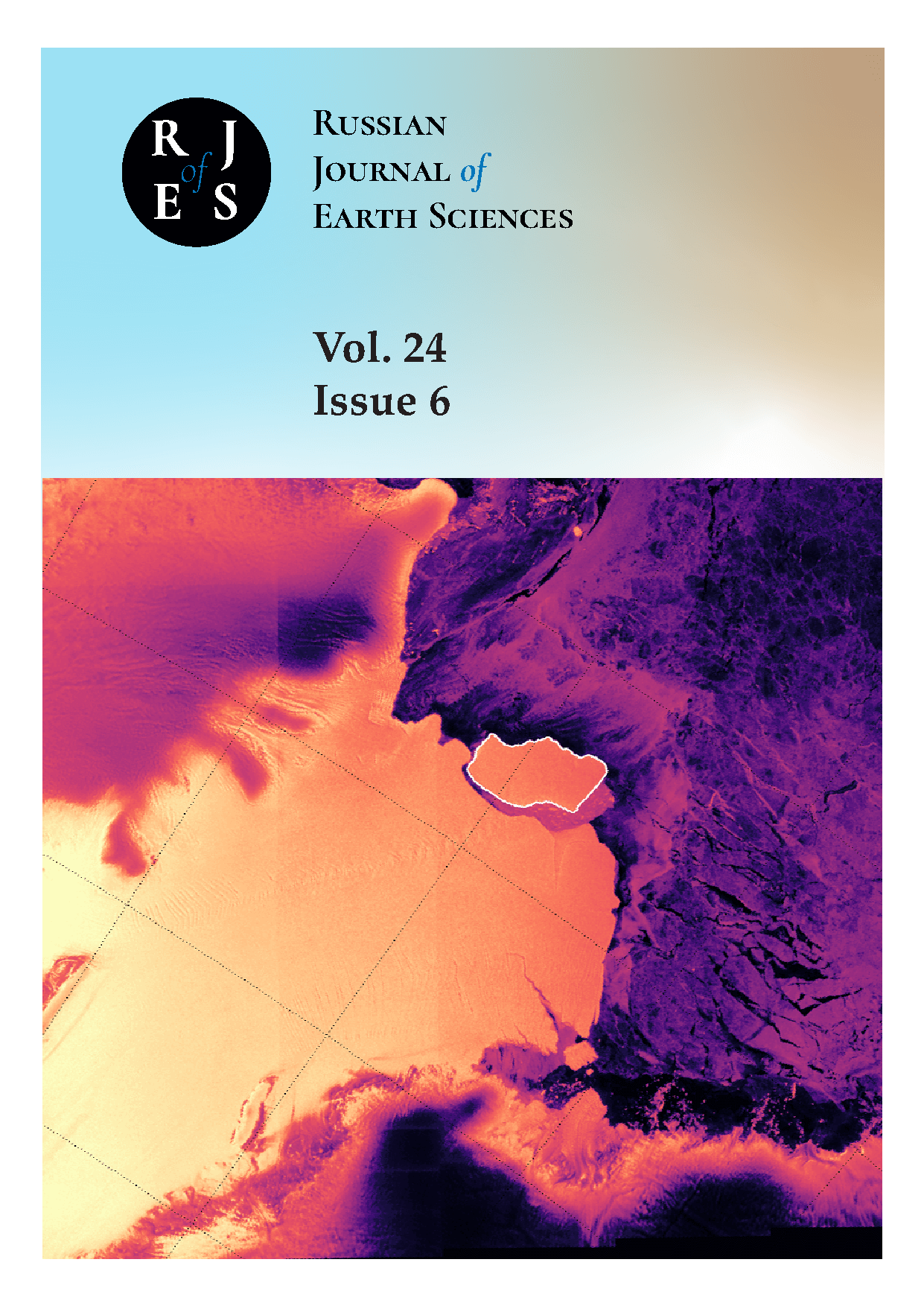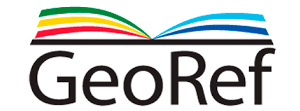India
India
India
Russian Federation
Russian Federation
from 01.01.1999 to 01.01.2024
Jodhpur, India
UDC 504
UDC 55
UDC 550.34
UDC 550.383
CSCSTI 37.01
CSCSTI 37.15
CSCSTI 37.25
CSCSTI 37.31
CSCSTI 38.01
CSCSTI 36.00
CSCSTI 37.00
CSCSTI 38.00
CSCSTI 39.00
CSCSTI 52.00
Russian Classification of Professions by Education 05.00.00
Russian Library and Bibliographic Classification 26
Russian Trade and Bibliographic Classification 63
BISAC SCI SCIENCE
Bathymetry unveils the underwater topography of oceans, seas, rivers, and lakes. It is a fundamental data resource for various applications, like physical oceanography, marine geology, geophysics, and marine resources. The techniques to compute the seafloor depths are ship-borne echo sensors, empirical models of satellite-derived bathymetry, and aerial-space-borne laser altimetry. The digital bathymetric surfaces are generally generated from a distributed seafloor depths. Once these depth points are collected, the next step to generate a continuous surface is to select and implement interpolation. Numerous interpolation methods have advantages and disadvantages that can hamper the accuracy of the surface, which generally depends on the shape of the extent, distribution, and point density. To date, there is no recommended interpolation method when the study extent is circular with well-distributed points – the core objective of this research is oriented towards this. An attempt was made to generate a digital bathymetric surface for the Mauritius coast with ∼ 1.2 million depth points accrued from the NASA ICESat-2 geolocated photons and sounding depths from the marine charts. These points were used as input to interpolation methods like Inverse Distance Weighted, Natural Neighbour, and various forms of Ordinary Kriging. Our findings show that all the methods have generated visually similar surfaces, but the Inverse Distance Weighted interpolation has given the output with less quantified uncertainty
Bathymetry, Interpolation, LiDAR, Inverse Distance Weighted, Natural Neighbour, Kriging
1. Amoroso, P. P., U. Falchi, F. G. Figliomeni, and A. Vallario (2023), The Influence of Interpolation Methods and point density on the Accuracy of a Bathymetric Model, in 2023 IEEE International Workshop on Metrology for the Sea; Learning to Measure Sea Health Parameters (MetroSea), pp. 148–153, IEEE, https://doi.org/10.1109/MetroSea58055.2023.10317127.
2. Ashphaq, M., P. K. Srivastava, and D. Mitra (2021), Review of near-shore satellite derived bathymetry: Classification and account of five decades of coastal bathymetry research, Journal of Ocean Engineering and Science, 6(4), 340–359, https://doi.org/10.1016/j.joes.2021.02.006. EDN: https://elibrary.ru/FPRQCW
3. Becker, M., M. Karpytchev, and F. Papa (2019), Hotspots of Relative Sea Level Rise in the Tropics, in Tropical Extremes, pp. 203–262, Elsevier, https://doi.org/10.1016/B978-0-12-809248-4.00007-8.
4. Brown, M. E., S. D. Arias, and M. Chesnes (2023), Review of ICESat and ICESat-2 literature to enhance applications discovery, Remote Sensing Applications: Society and Environment, 29, 100,874, https://doi.org/10.1016/j.rsase.2022.100874. EDN: https://elibrary.ru/BJCYNL
5. Burrough, P. A., R. A. McDonnell, and C. D. Lloyd (2015), Principles of geographical information systems, 432 pp., Oxford University Press, USA.
6. Childs, C. (2004), Interpolating surfaces in ArcGIS spatial analyst, ArcUser.
7. Collet, S., T. Kidokoro, P. Karamchandani, and T. Shah (2018), Future-Year Ozone Isopleths for South Coast, San Joaquin Valley, and Maryland, Atmosphere, 9(9), 354, https://doi.org/10.3390/atmos9090354.
8. de Souza, E. C. B., C. P. Kruger, and C. R. Sluter (2003), Determinação das variações volumétricas no ISTMO da ilha do mel utilizando PDGPS, Boletim de Ciências Geodésicas, 9(1), 53–74.
9. Devi, P. Y., and X. Xi (2020), The impacts of climate change on the coastal zone of Mauritius, Journal of East China Normal University (Natural Science), 2020(S1)(104), https://doi.org/10.3969/j.issn.1000-5641.202092213.
10. Doorga, J. R. S., M. Sadien, N. A. Bheeroo, et al. (2021), Assessment and management of coastal erosion: Insights from two tropical sandy shores in Mauritius Island, Ocean & Coastal Management, 212, 105,823, https://doi.org/10.1016/j.ocecoaman.2021.105823.
11. Duvat, V. K. E., A. Anisimov, and A. K. Magnan (2020), Assessment of coastal risk reduction and adaptation-labelled responses in Mauritius Island (Indian Ocean), Regional Environmental Change, 20(4), https://doi.org/10.1007/s10113 -020-01699-2. DOI: https://doi.org/10.1007/s10113-020-01699-2; EDN: https://elibrary.ru/EZPFOF
12. Dysart, P. S. (1996), Bathymetric surface modeling: A machine learning approach, Journal of Geophysical Research: Solid Earth, 101(B4), 8093–8105, https://doi.org/10.1029/95JB03737.
13. ESRI (2024a), GIS Software for Mapping and Spatial Analytics, https://www.esri.com.
14. ESRI (2024b), How Kriging works, https://pro.arcgis.com/en/pro-app/tool-reference/3d-analyst/how-kriging-works.htm.
15. Ferreira, I. O., D. D. Rodrigues, G. Rodrigues dos Santos, and L. M. F. Rosa (2017), In bathymetric surfaces: IDW or Kriging?, Boletim de Ciências Geodésicas, 23(3), 493–508, https://doi.org/10.1590/S1982-21702017000300033.
16. GAGE Facility (2021), Geoid Height Calculator, https://www.unavco.org/software/geodetic-utilities/geoid-heightcalculator/geoid-height-calculator.html.
17. Giribabu, D., R. Hari, J. Sharma, et al. (2023), Prerequisite Condition of Diffuse Attenuation Coefficient Kd(490) for Detecting Seafloor from ICESat-2 Geolocated Photons During Shallow Water Bathymetry, Hydrology, 11(1), 11, https://doi.org/10.11648/j.hyd.20231101.12. EDN: https://elibrary.ru/MCPBKN
18. Giribabu, D., R. Hari, J. Sharma, et al. (2024), Performance assessment of GEBCO_2023 gridded bathymetric data in selected shallow waters of Indian ocean using the seafloor from ICESat-2 photons, Marine Geophysical Research, 45(1), https://doi.org/10.1007/s11001-023-09534-z. EDN: https://elibrary.ru/YHDIEK
19. Guo, X., X. Jin, and S. Jin (2022), Shallow Water Bathymetry Mapping from ICESat-2 and Sentinel-2 Based on BP Neural Network Model, Water, 14(23), 3862, https://doi.org/10.3390/w14233862. EDN: https://elibrary.ru/DEHSRY
20. Hawker, L., and J. Neal (2021), FABDEM V1-0, https://doi.org/10.5523/BRIS.25WFY0F9UKOGE2GS7A5MQPQ2J7.
21. Henrico, I. (2021), Optimal interpolation method to predict the bathymetry of Saldanha Bay, Transactions in GIS, 25(4), 1991–2009, https://doi.org/10.1111/tgis.12783 EDN: https://elibrary.ru/CEAIBZ
22. Hilldale, R. C., and D. Raff (2007), Assessing the ability of airborne LiDAR to map river bathymetry, Earth Surface Processes and Landforms, 33(5), 773–783, https://doi.org/10.1002/esp.1575.
23. INHO (2024), National Hydrographic Office, https://hydrobharat.gov.in.
24. Li, J., and A. D. Heap (2014), Spatial interpolation methods applied in the environmental sciences: A review, Environmental Modelling & Software, 53, 173–189, https://doi.org/10.1016/j.envsoft.2013.12.008.
25. Li, Z., Z. Peng, Z. Zhang, et al. (2023), Exploring modern bathymetry: A comprehensive review of data acquisition devices, model accuracy, and interpolation techniques for enhanced underwater mapping, Frontiers in Marine Science, 10, https://doi.org/10.3389/fmars.2023.1178845. EDN: https://elibrary.ru/XGBGKI
26. Luo, W., M. C. Taylor, and S. R. Parker (2007), A comparison of spatial interpolation methods to estimate continuous wind speed surfaces using irregularly distributed data from England and Wales, International Journal of Climatology, 28(7), 947–959, https://doi.org/10.1002/joc.1583.
27. Markus, T., T. Neumann, A. Martino, et al. (2017), The Ice, Cloud, and land Elevation Satellite-2 (ICESat-2): Science requirements, concept, and implementation, Remote Sensing of Environment, 190, 260–273, https://doi.org/10.1016/j.rse.2016.12.029.
28. Mesić Kiš, I. (2016), Comparison of Ordinary and Universal Kriging interpolation techniques on a depth variable (a case of linear spatial trend), case study of the Šandrovac Field, Rudarsko-geološko-naftni zbornik, 31(2), 41–58, https://doi.org/10.17794/rgn.2016.2.4.
29. National Snow and Ice Data Center (2023), OpenAltimetry: Visulize and download surface elvevation data from across the Earth, over time, https://openaltimetry.earthdatacloud.nasa.gov/data/.
30. Neumann, T. A., A. J. Martino, T. Markus, et al. (2019), The Ice, Cloud, and Land Elevation Satellite-2 mission: A global geolocated photon product derived from the Advanced Topographic Laser Altimeter System, Remote Sensing of Environment, 233, 111,325, https://doi.org/10.1016/j.rse.2019.111325.
31. Parrish, C., L. Magruder, A. Neuenschwander, et al. (2019), Validation of ICESat-2 ATLAS Bathymetry and Analysis of ATLAS’s Bathymetric Mapping Performance, Remote Sensing, 11(14), 1634, https://doi.org/10.3390/rs11141634. EDN: https://elibrary.ru/GCZGMY
32. Pratomo, D. G., R. A. D. Safira, and O. Stefani (2023), A comparison of different GIS-based interpolation methods for bathymetric data: case study of Bawean Island, East Java, Geodesy and cartography, 49(4), 186–194, https://doi.org/10.3846/gac.2023.18250. EDN: https://elibrary.ru/KRIMUW
33. Ranndal, H., P. Sigaard Christiansen, P. Kliving, O. Baltazar Andersen, and K. Nielsen (2021), Evaluation of a Statistical Approach for Extracting Shallow Water Bathymetry Signals from ICESat-2 ATL03 Photon Data, Remote Sensing, 13(17), 3548, https://doi.org/10.3390/rs13173548. EDN: https://elibrary.ru/CWLPJI
34. Sibson, R. (1981), A Brief Description of Natural Neighbor Interpolation, in Interpolating Multivariate Data, John Wiley & Sons, New York.
35. Smith, W. H. F., and D. T. Sandwell (1997), Global Sea Floor Topography from Satellite Altimetry and Ship Depth Soundings, Science, 277(5334), 1956–1962, https://doi.org/10.1126/science.277.5334.1956. EDN: https://elibrary.ru/CNJROJ
36. Vogt, P. R., and B. E. Tucholke (1986), Imaging the ocean floor: History and state of the art, pp. 19–44, https://doi.org/10.1130/DNAG-GNA-M.19.
37. Wang, S., G. H. Huang, Q. G. Lin, et al. (2014), Comparison of interpolation methods for estimating spatial distribution of precipitation in Ontario, Canada, International Journal of Climatology, 34(14), 3745–3751, https://doi.org/10.1002/joc.3941.
38. Watson, D. (1992), Contouring: A Guide to the Analysis and Display of Spatial Data, Pergamon Press, London.
39. Wölfl, A.-C., H. Snaith, S. Amirebrahimi, et al. (2019), Seafloor Mapping - The Challenge of a Truly Global Ocean Bathymetry, Frontiers in Marine Science, 6, https://doi.org/10.3389/fmars.2019.00283. EDN: https://elibrary.ru/XTXYXM
40. Xie, C., P. Chen, D. Pan, C. Zhong, and Z. Zhang (2021), Improved Filtering of ICESat-2 Lidar Data for Nearshore Bathymetry Estimation Using Sentinel-2 Imagery, Remote Sensing, 13(21), 4303, https://doi.org/10.3390/rs13214303. EDN: https://elibrary.ru/APROCY















